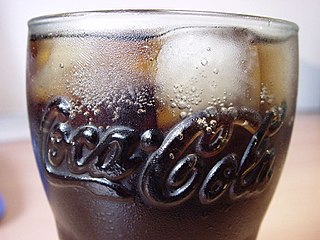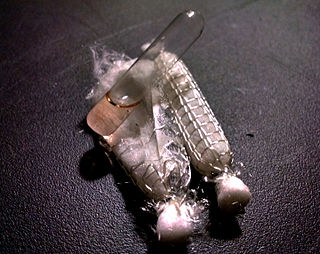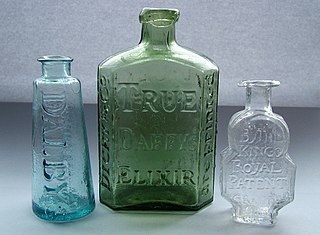
Laudanum is a tincture of opium containing approximately 10% powdered opium by weight. Laudanum is prepared by dissolving extracts from the opium poppy in alcohol (ethanol).

In recipes, quantities of ingredients may be specified by mass, by volume, or by count.

Paregoric, or camphorated tincture of opium, also known as tinctura opii camphorata, is a traditional patent medicine known for its antidiarrheal, antitussive, and analgesic properties.

Isabella Mary Beeton, known as Mrs Beeton, was an English journalist, editor and writer. Her name is particularly associated with her first book, the 1861 work Mrs Beeton's Book of Household Management. She was born in London and, after schooling in Islington, north London, and Heidelberg, Germany, she married Samuel Orchart Beeton, an ambitious publisher and magazine editor.

Lancashire hotpot is a stew originating in Lancashire in the North West of England. It consists of lamb or mutton and onion, topped with sliced potatoes and slowly baked in a pot at a low heat.

The Coca-Cola Company's formula for Coca-Cola syrup, which bottlers combine with carbonated water to create the company's flagship cola soft drink, is a closely guarded trade secret. Company founder Asa Candler initiated the veil of secrecy that surrounds the formula in 1891 as a publicity, marketing, and intellectual property protection strategy. While several recipes, each purporting to be the authentic formula, have been published, the company maintains that the actual formula remains a secret, known only to a very few select, and anonymous, employees. The claim that the recipe is only known to two people and that they cannot fly on the same plane due to the chance they may die, and the recipe will become unknown, is a myth and has been fact-checked multiple times.

A tincture is typically an extract of plant or animal material dissolved in ethanol. Solvent concentrations of 25–60% are common, but may run as high as 90%. In chemistry, a tincture is a solution that has ethanol as its solvent. In herbal medicine, alcoholic tinctures are made with various ethanol concentrations, which should be at least 20% alcohol for preservation purposes.

Mrs. Beeton's Book of Household Management, also published as Mrs. Beeton's Cookery Book, is an extensive guide to running a household in Victorian Britain, edited by Isabella Beeton and first published as a book in 1861. Previously published in parts, it initially and briefly bore the title Beeton's Book of Household Management, as one of the series of guidebooks published by her husband, Samuel Beeton. The recipes were highly structured, in contrast to those in earlier cookbooks. It was illustrated with many monochrome and colour plates.

Mincemeat is a mixture of chopped apples and dried fruit, distilled spirits or vinegar, spices, and optionally, meat and beef suet. Mincemeat is usually used as a pie or pastry filling. Traditional mincemeat recipes contain meat, notably beef or venison, as this was a way of preserving meat prior to modern preservation methods. Modern recipes often replace the suet with vegetable shortening or other oils and/or omit the meat. However, many people continue to prepare and serve the traditional meat-based mincemeat for holidays.

Smelling salts, also known as ammonia inhalants, spirit of hartshorn or sal volatile, are chemical compounds used as stimulants to restore consciousness after fainting.
Jenny Lind's soup is a soup named for popular 19th-century singer Jenny Lind. She is supposed to have used this soup to soothe her chest and found it to be beneficial to her voice before performances.

Dalby's Carminative was one of the two most widely used patent medicines given to babies and children at the end of the 18th and beginning of the 19th centuries. Together with its rival, Godfrey's Cordial, they were known as "mother's friends" and were used for everything from colic and coughs to typhoid.

Chicken salad is any salad with chicken as a main ingredient. Other common ingredients include mayonnaise, hard-boiled egg, celery, onion, pepper, pickles and a variety of mustards.
In pre-modern medicine, catholicon was a soft electuary, so called as being supposedly universal in its curative and prophylactic abilities ; or a purger of all humours.

Cauliflower cheese is a traditional English dish. It can be eaten as a main course, for lunch or dinner, or as a side dish.

Eau de toilette is a lightly scented perfume. It is also referred to as aromatic waters and has a high alcohol content. It is usually applied directly to the skin after bathing or shaving. It is traditionally composed of alcohol and various volatile oils. Traditionally these products were named after a principal ingredient, like geranium water, lavender water, lilac water, violet water, spirit of myrcia and "eau de Bretfeld". Because of this, eau de toilette was sometimes referred to as "toilet water".
Hodge-podge or hotch potch is a soup or stew, usually based on diced mutton or other meat, with green and root vegetables. It is familiar in different versions in Britain and North America and is particularly associated with Scotland.

Macaroni soup is soup that includes macaroni. The food was included in Mrs. Beeton's Book of Household Management, where the connection with Italy is mentioned and the dish includes Parmesan cheese. In the early 19th century, macaroni soup was one of the most common dishes in Italian inns.

A rock cake, also called a rock bun, is a small cake with a rough surface resembling a rock. They were promoted by the British Ministry of Food during the Second World War since they require fewer eggs and less sugar than ordinary cakes, an important savings in a time of strict rationing. Traditional recipes bulked them with oatmeal, which was more readily available than white flour.

Oxford sausages are a distinctive variety of pork and veal sausage commonly associated with, and thought to have been developed in, the English city of Oxford. Traditionally, Oxford sausages are noted for the addition of veal, in contrast to many traditional British sausages which contain only pork, and their high level of spice seasoning. References to the "Oxford" style of sausage date back to at least the early 18th century, but it was more widely popularised owing to inclusion in Mrs Beeton's Book of Household Management, first published in 1861.

















